Issued on June 19, 2024
Digging Deeper with Goddess Gardener Cynthia Bryan
June Boone by Cynthia Bryan
A branch of sour Bing cherries. Photo by Cynthia Bryan
“Life's just a bowl of cherries, so live it and laugh it all away.” Lyrics by Lew Brown, sung by Rudy Valley, 1931![]()
Birds flock to our two trees, and each day I watch them devour the precious unripe fruit, waiting impatiently for the sunlight to turn them crimson and purple. Finally, I could stand it no longer. I grabbed my pruning shears, put on my boots, and grabbed a colander. ![]()
I walk to the orchard, determined to pick as many cherries as I can before my bird friends devour them. The Queen Annes are nearly ripe, the Bings are still tiny, but I still fill the colander to the brim. ![]()
Last summer, after a poor harvest, I cut the tree back by about a third. This June, my efforts paid off, and I got a harvest of sweet cherries to share with the flying acrobats. Most people know the Bing cherries sold in supermarkets. Bing cherries, with their deep red-purple-black color, are firm and juicy, known for their intense sweetness with a hint of tartness. Compared to Bing cherries, the lesser known Queen Anne variety has a milder, honey-like flavor and is chewier with vibrant red and yellow marbled patterns. Like the birds, I gorge on cherries fresh from the branches. As a child, my family would always pick cherries on a nearby farm, where they usually ripened in late May. The pay was small, but a perk was the opportunity to eat this delicious fruit while filling buckets for sale. One year, my siblings and I had a competition to see who could pick the most cherries, “one in the mouth, one in the bucket.” We all paid the price for our childishness when we got horribly sick. For years, none of us could even see a cherry. ![]()
As adults, we laugh at our cherry fiascos. We have fallen in love with this delicious crop again and eat them in moderation in salads, pies, jams, etc. Birds have dropped seeds all over my garden and little cherry trees have sprouted up where they fell.![]()
While the June blues engulf Southern California, Northern California awaits June's bounty. Northern California's mild winters and hot summers bring a variety of flowers to June. Stunning clematis creep up and down pipes, showcasing their second season of looks. Like most plants, clematis prefers well-drained, organic-rich soil. Once established, clematis is relatively easy to care for, requiring minimal water, occasional fertilizer, and pruning to produce healthy growth and abundant flowers that attract bees, butterflies, and hummingbirds. ![]()
Roses bloom in my garden, adding beauty and fragrance, while common cornflags add spires of fuchsia-pink torches. My perennial, spicy-scented Asiatic lilies give off an enticing fragrance in their large, bold flowers that attract pollinators. These lilies make gorgeous bouquets, the splendid stars of my garden, but I am loath to cut even one.![]()
Yarrow's fern-like leaves add visual interest while its deep roots help break down compacted clay and improve drainage. Yarrow's leaves store nutrients, making it an excellent choice for composting. By attracting pollinators and ladybugs, yarrow increases biodiversity and promotes healthier ecosystems. As a medicinal plant containing anti-inflammatory, antiseptic and analgesic compounds, yarrow has been used for centuries to treat wounds, relieve cold and fever symptoms, and ease the pain of insect bites.![]()
Nasturtium's edible flowers and leaves add a zesty flavor to salads, sandwiches and garnishes. The plant, which I call “Nonna” because it grew in my grandmother's garden, is easy to grow from seed. The dense flowers and leaves can cascade over walls, fences and raised beds, or be used as a ground cover mulch to suppress weeds. Nasturtiums attract beneficial insects that control pests such as aphids, whiteflies and stink bugs.![]()
To add a pop of color to your patio or porch, try potting a bright red geranium. Geraniums thrive in full sun or partial shade, root easily from cuttings, and require little maintenance. Pruning dead flowers and long stems will encourage a lush blooming that will continue into fall. Geraniums are a surefire June bloomer.![]()
Have you found lots of spider webs in your garden? Congratulations! Gardens without chemical pesticides tend to have more spiders. As natural pest control, spiders help maintain the balance between predators and prey. Although it may be unsettling to dive headfirst into a nearly invisible spider web, you'll be happy to see these hunters of mosquitoes, flies, aphids, beetles and more. ![]()
While there is a growing trend in fire-prone areas to remove lawns to minimize water use, a well-manicured, green grass area, mowed to 3 inches or less, provides defensible space for your home and reduces the risk of wildfire ignition and spread. No landscaping method is fire-resistant, but a healthy, mowed, and watered lawn can reduce the amount of combustible material that can start a fire. Lawns are aesthetically pleasing, provide a restful environment, and refresh the eyes from the hustle and bustle of modern life. Whether in a park or a small backyard, lawns soothe the senses and invite people to play. Cartwheels, croquet, picnics, and stargazing connect us to the natural elements. ![]()
There's no better place to sit on the green grass and eat a bowl full of cherries, so live and laugh at it all.![]()
Happy gardening. Happy growing. Happy June!
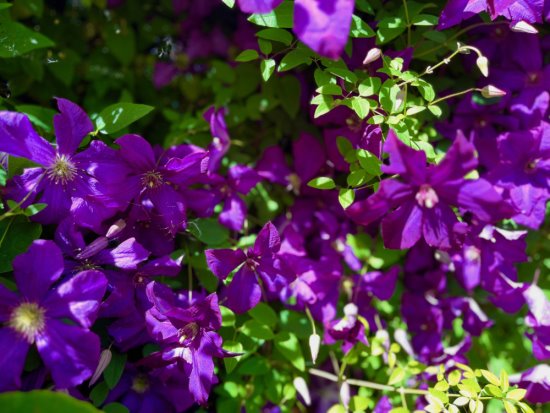
A second wave of clematis attracts pollinators. Photo: Cynthia Bryan
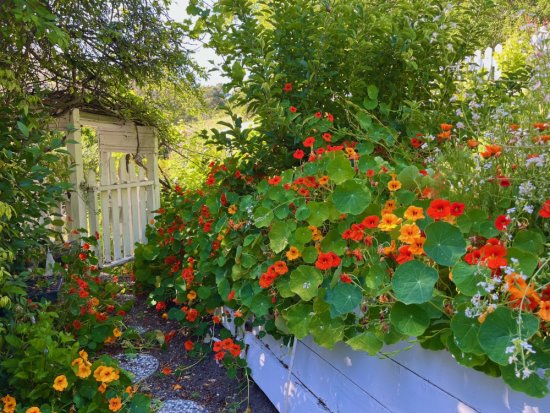
Delicious nasturtiums cascade into raised beds. Photo by Cynthia Bryan
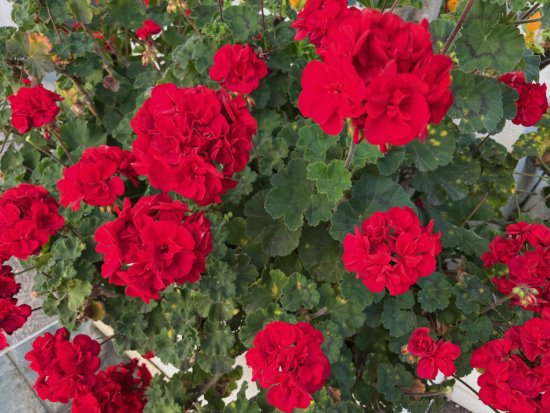
Fire-engine red geraniums add to the atmosphere. Photo: Cynthia Bryan
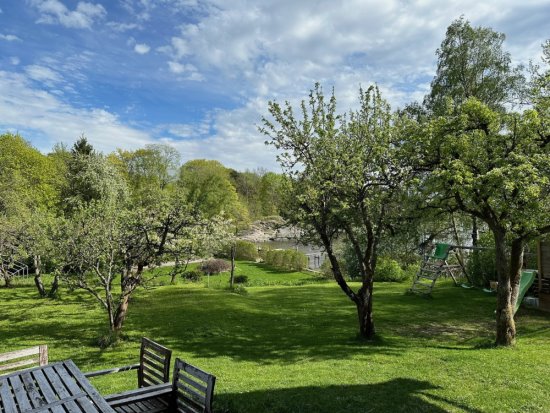
Flowering fruit trees in a friend's rustic orchard surrounded by low-cut green grass. Photo by Cynthia Bryan
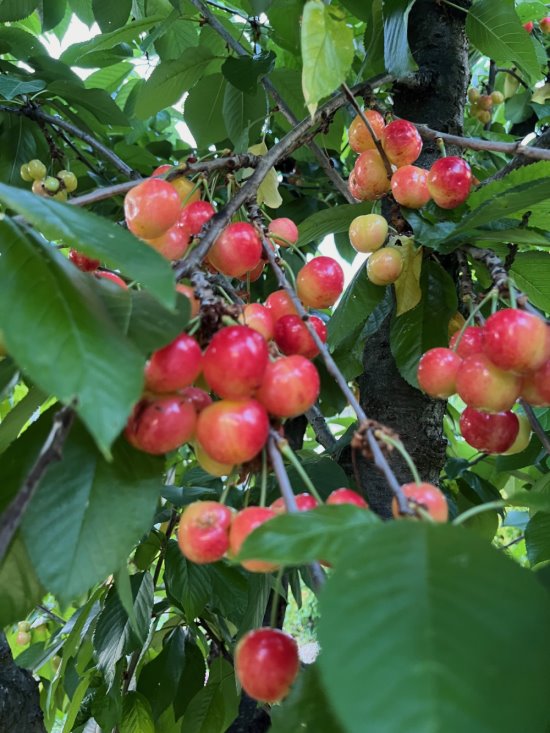
Queen Anne cherries are crisp and sweet.
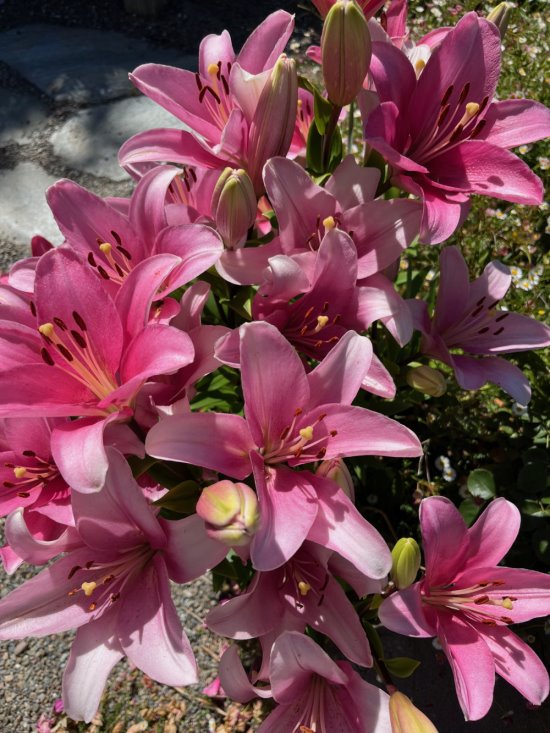
Fragrant and bold, Asiatic lilies are prized for their spectacular flowers.

Fluffy, soft, silvery lamb's ear leaves surround Cynthia Bryan. For more gardening advice for all seasons, check out “Growing with the Goddess Gardener” at https://www.CynthiaBrian.com/books. Raised on the vineyards of Napa County, Cynthia Bryan is a New York Times bestselling author, actor, radio personality, speaker, media and writing coach, and founder and executive director of Be the Star You Are!r 501 c3, which was just named 2024 Nonprofit of the Year by the Moraga Chamber of Commerce. Listen to Cynthia's StarStyler radio broadcast at www.StarStyleRadio.com. Her latest children's picture book, “Books in the Barnyard: Oh Deer!” series, “Stella Bella's Barnyard Adventures,” is available for pre-sale at a discount at https://www.CynthiaBrian.com/online-store. Hire Cynthia for writing projects, garden consulting, and inspirational lectures. Cynthia@GoddessGardener.com https://www.CynthiaBrian.com


